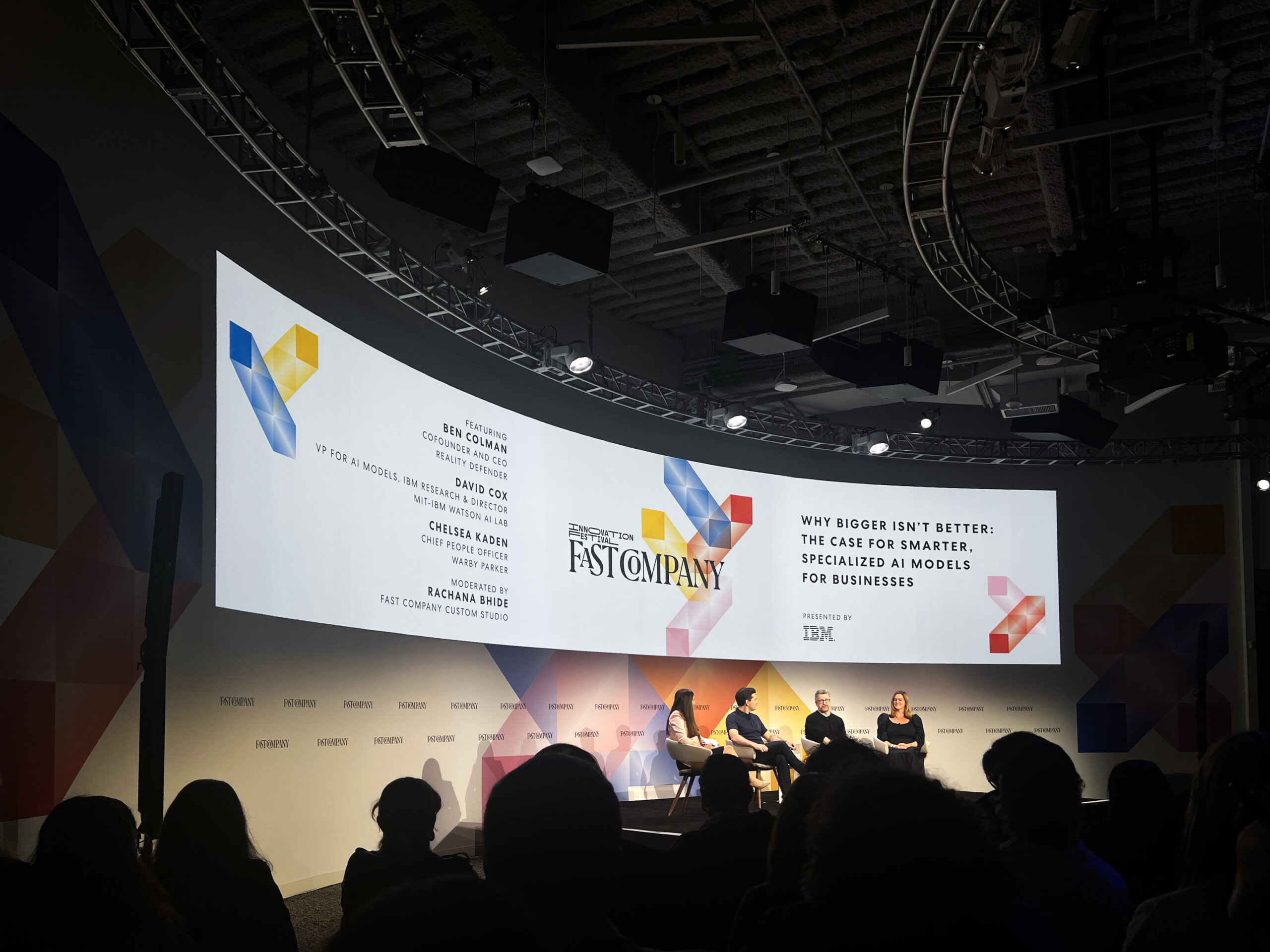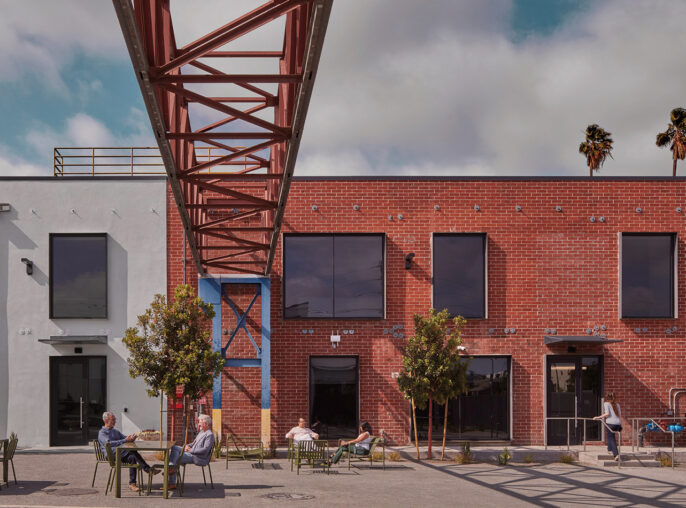Insight
What SXSW Taught Me About AI, XR, and Our Role in it All
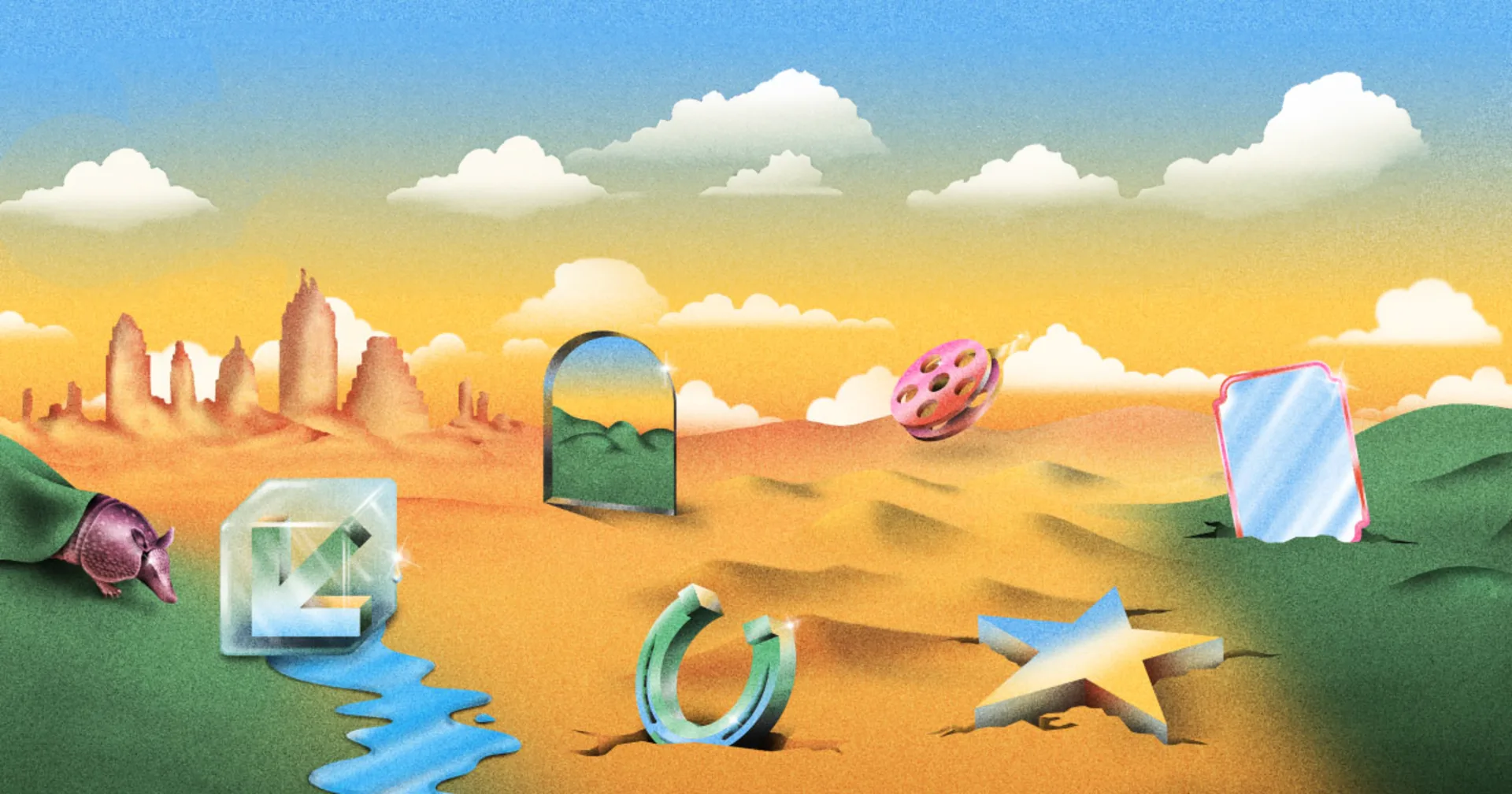
As designers and architects, we are responsible for shaping the world around us. It requires us to understand how spaces and people function and interact with one another. Both concepts are ever evolving due to innovation and progress. One of the leading drivers of this progress is technology. The importance and prevalence of technology is growing exponentially. Particularly the rise of AI, which was a central focus of this year’s SXSW.
If you’re unfamiliar with SXSW (the abbreviation for South by Southwest), it’s an annual festival celebrating technology, media, and music hosted in Austin, Texas. SXSW provides a platform for creative industries to converge and showcase innovation.
I recently had the opportunity to attend SXSW, curious to learn more about the future of so many important facets of society. SXSW is a future-focused festival that provides cross-industry pollination through their diverse event program. It provides access to pioneers in their field – from tech to film to art. I was particularly excited to attend a panel hosted by John Maeda, a visionary thinker who used to be the head of my alma mater.
Key Insights
Everyone at SXSW was talking about AI—but with hope. It felt like a collective turning point, not just in tech, but in how we imagine collaboration, creativity, and the future of work itself. Yes, there are challenges. AI models like GPT are now generating reports, poetry, and other creative works at a level that rivals human expertise. They’re outperforming professionals in pattern recognition and data processing. But it’s not just about efficiency—it’s about transformation.
And that was a big theme: transformation over optimization. This isn’t about fine-tuning the way we already work. It’s about completely rethinking it. As designers, that resonates. We’re not just refining old processes—we’re evolving how we solve problems, how we create, how we interact with the world. AI isn’t replacing creativity—it’s pushing us to reimagine what creativity looks like.
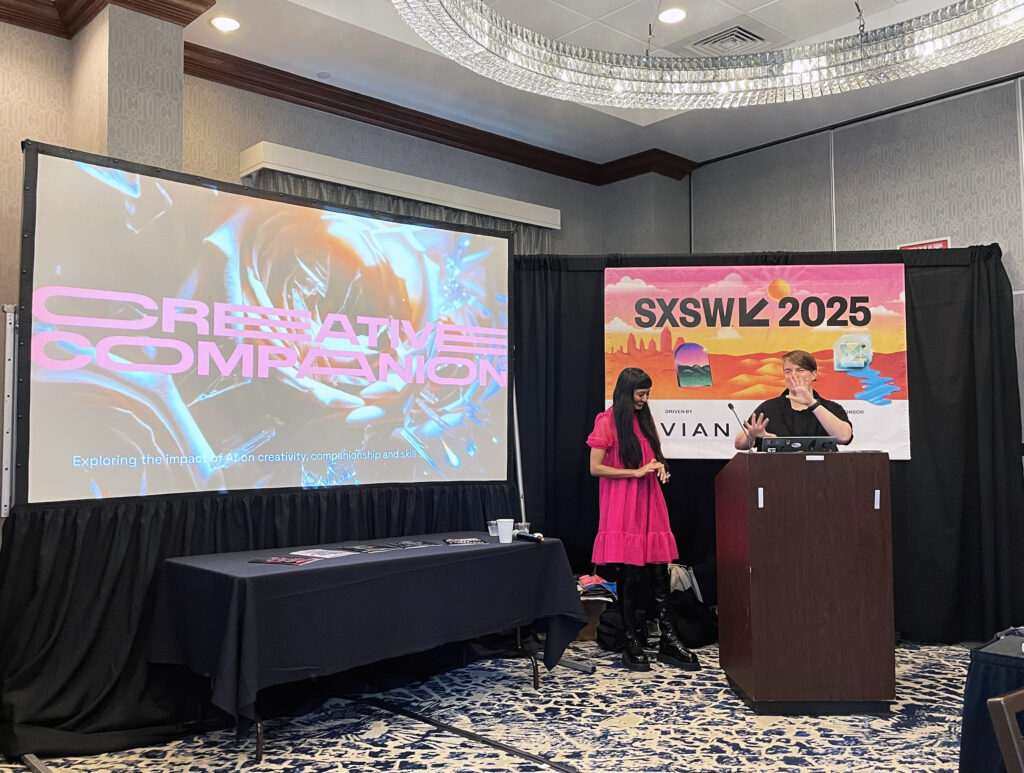
The other thing I kept hearing? Skills are evolving—fast. There was a prediction floating around that, in the near future, the shelf life of a skill could be as short as six months (according to Ian Beacraft). That’s a wild thought. But it makes sense. To stay relevant, we’ll need to continuously learn and adapt. There’s a shift happening toward training the brain like a muscle—treating learning as a lifelong, active pursuit. Interdisciplinary thinking was especially emphasized: “T-shaped” professionals who go deep in one field but are fluent across others, and “X-shaped” leaders who can connect, synthesize, and guide across domains. The future will favor those who can cross-pollinate ideas and pivot quickly—a concept they called surge skilling.
One of the most compelling spaces at SXSW was the Extended Reality (XR) zone. There were over 30 immersive experiences, and the combination of XR + AI opened up entirely new modes of storytelling. I stepped into a speculative ecosystem through Future Botanic, designed with an AI collaborator. I saw the world through a bat’s echolocation in Echo Vision. And I was deeply moved by Reflections of Little Red Dot, a mixed reality experience bringing personal and political archives of Singaporean voices to life. These experiences weren’t just cool—they were powerful. They challenged me to think differently about empathy, memory, and our relationship to place.
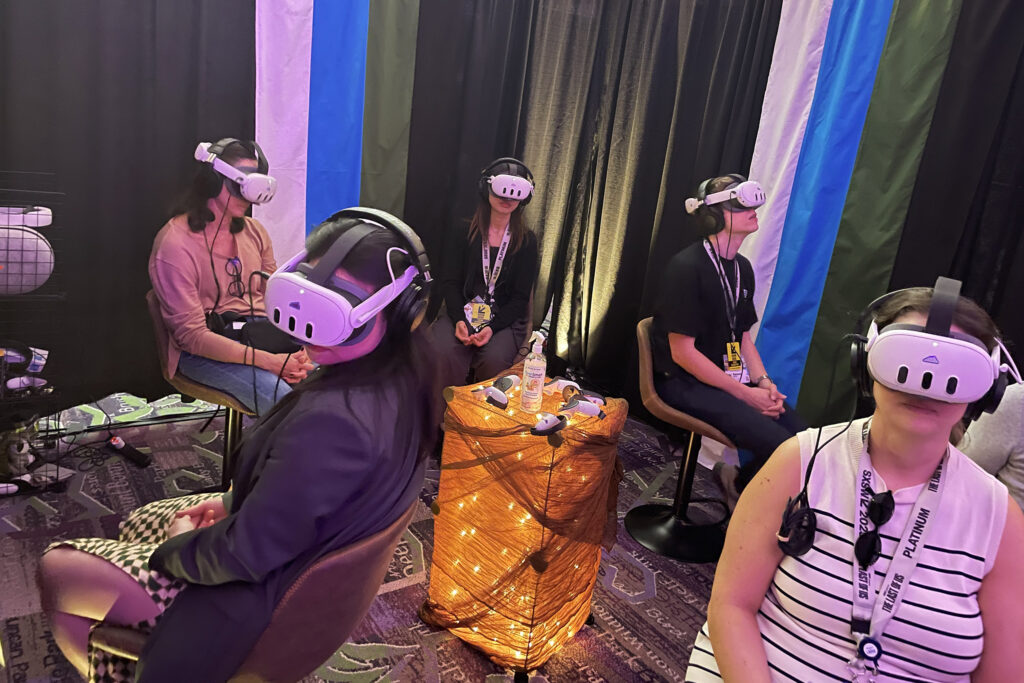
And then there was the simple joy of co-creating a fairy tale with an AI (a workshop led by Ideo). Together, we built characters and worlds, and in the end, I held a printed storybook of our collaboration in my hands. It reminded me: fun matters. Play is powerful. Especially when we’re asking people to engage with complex systems or unfamiliar tools. Fun holds attention. It invites curiosity. It builds connection.
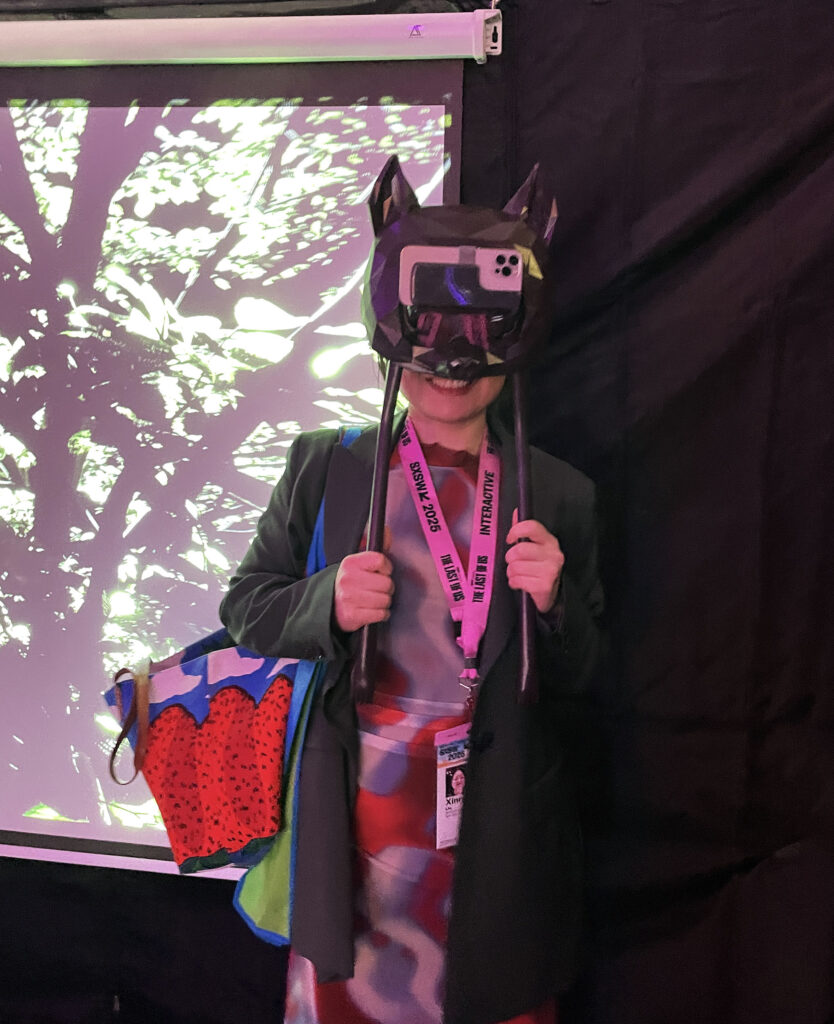
Future Trends
Looking ahead, the conversation is only getting more interesting.
We’re on the edge of quantum computing breakthroughs that could transform material science, pricing models, and logistics. AI models themselves are getting smaller and more efficient, using less energy—making them more accessible and sustainable.
We’re also seeing a broader shift in how we define intelligence. While current AI won’t lead us directly to Artificial General Intelligence (AGI), there’s a growing movement toward living intelligence—the fusion of AI, sensors, and biotechnology. Systems that can perceive, learn, and evolve beyond their programming.
Extended Reality is also finding serious footing outside entertainment. Applications in healthcare, education, and workplace training are already being piloted. And AI-enabled robots are finally moving beyond factory floors, designed to operate in more unpredictable, real-world environments.
For designers and architects, the emergence of metamaterials could change everything—from self-cooling facades to adaptive, ultra-resilient infrastructure. This is where the built environment becomes a dynamic partner in sustainability.
And perhaps most urgent of all: climate innovation. The acceleration of extreme weather events is forcing every industry to reconsider what resilience looks like. Technology isn’t just a tool for progress—it’s becoming a lifeline for adaptation.
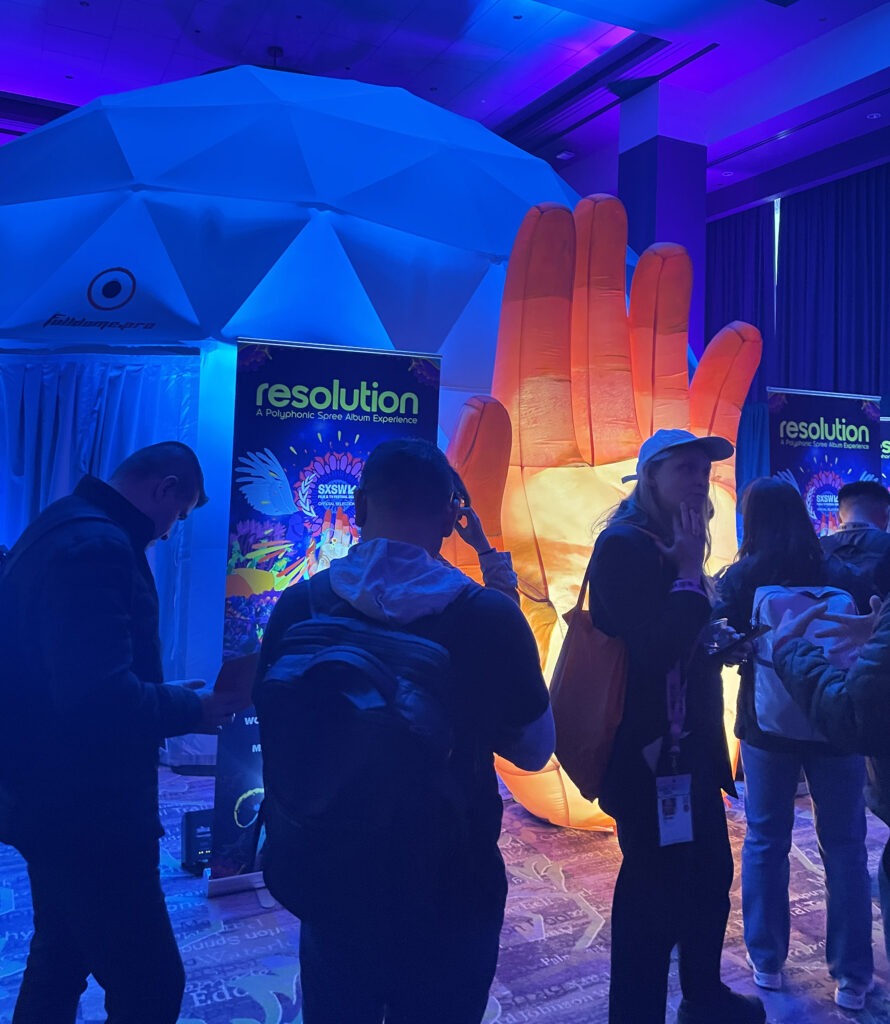
What parts of this future are you most curious—or skeptical—about? I left SXSW feeling both energized and humbled. The world is changing quickly. But we have the chance, and the responsibility, to shape that change with intention.

